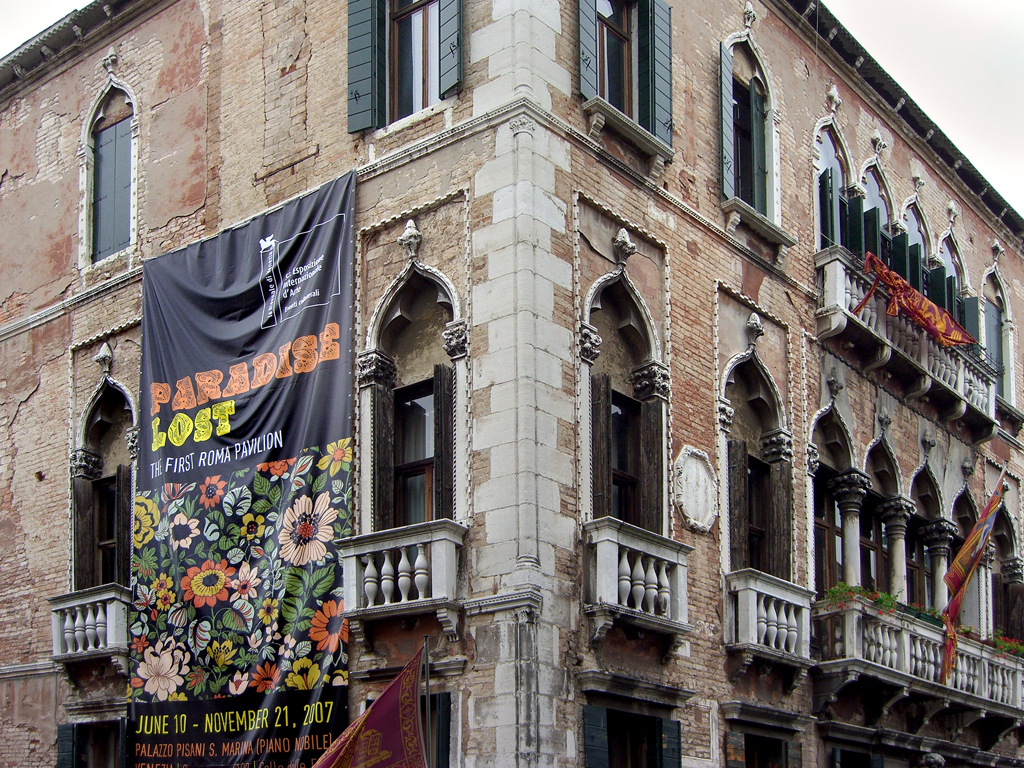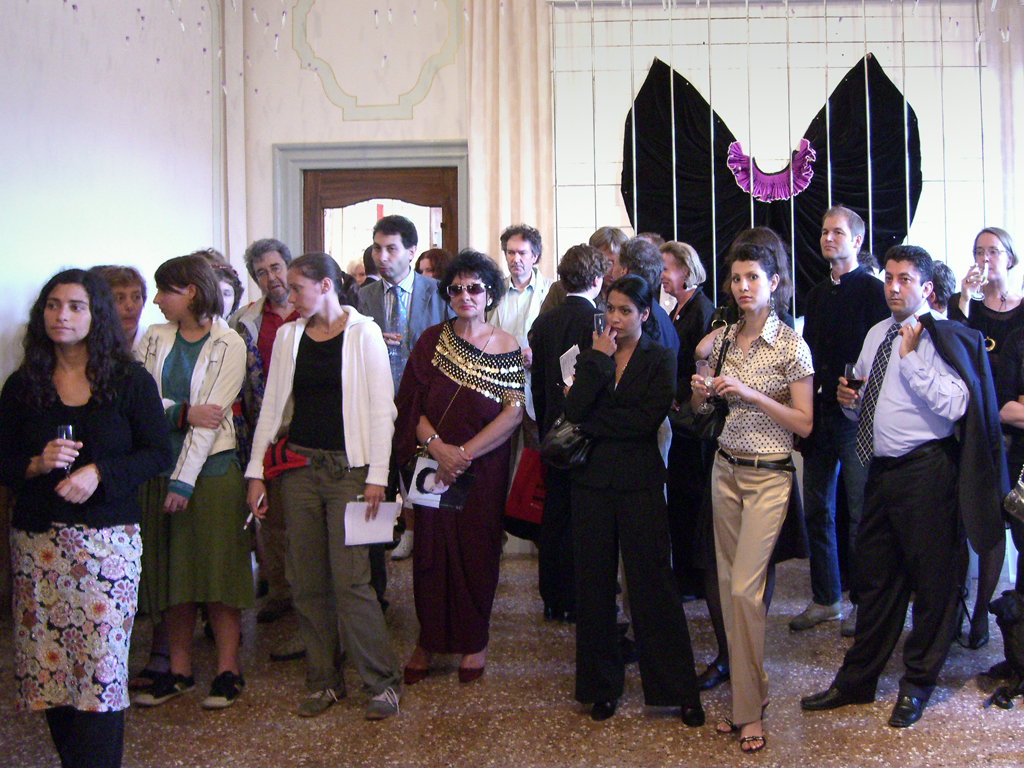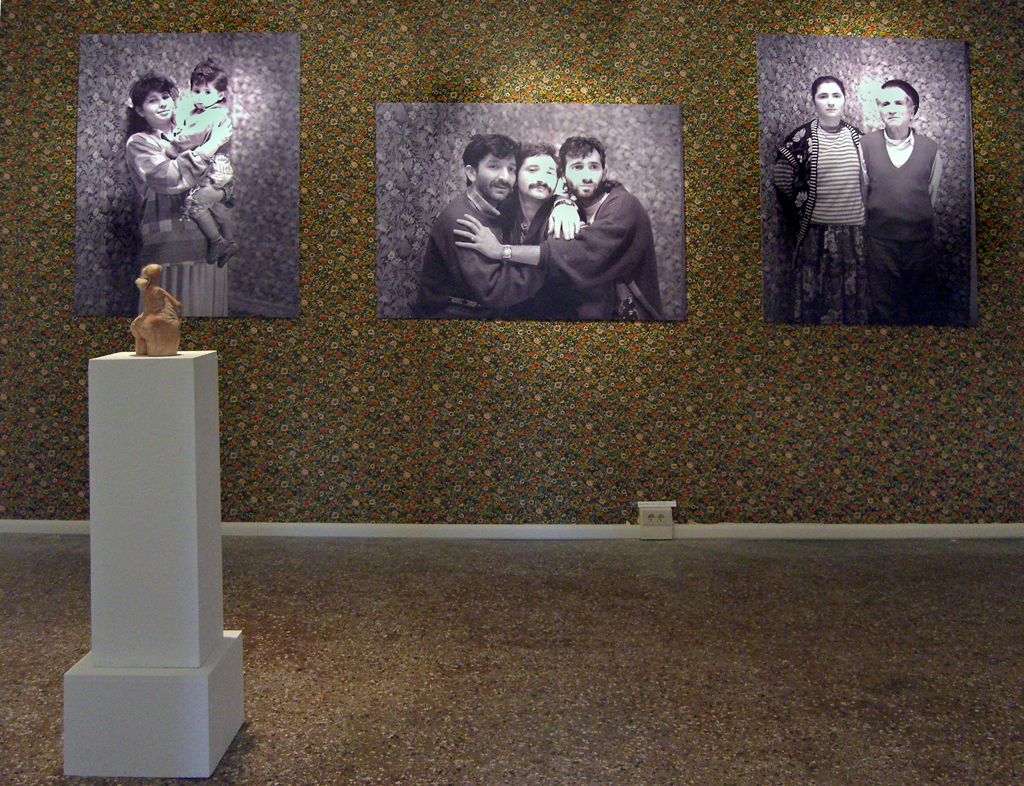
03 Jul Paradise Lost – The First Roma Pavilion: A Retrospective Look
The Open Society Institute, the Allianz Kulturstiftung and the European Cultural Foundation announced the opening of the first Roma Pavilion at the 52nd Venice Biennale in June 2007. The Roma Pavilion presented a selection of Roma (otherwise known as Gypsy) contemporary artists from eight European countries. The Pavilion constituted the first significant step toward giving Roma Contemporary Culture the audience it deserves.
The centrally located 16th century Palazzo Pisani S. Marina hosted the Roma exhibition, showing for the very first time in the history of the Biennale. The Roma Pavilion presenting 14 artists from 8 countries was initiated by the Budapest office of the Open Society Institute and its curator was Hungarian art historian Tímea Junghaus. The proposal for the contemporary Roma art exhibition was buttressed by a number of high-ranking political and cultural supporters. One of the professional advisers was Russian curator Viktor Misiano who had had a record of launching “first exhibitions”.

The selected artists work in a wide range of genre and media, from traditional oil painting and photography to video, installation, and objects. Palazzo Pisani offered several separate spaces, and the organizers yearned to take advantage of this architectural arrangement. The densely colored canvases of István Szentandrássy (H), for instance, were to be hung in a candle-lit side-room. Some other works were eager to venture out to the open: the landscapes of Gabi Jimenez (E) were to be printed on cloth and cover the tabletops of nearby cafés. At first sight, these paintings look like bright depictions of gleeful caravan camps but on a closer look, they turn out to be urban landscapes, viewed from Jimenez’s perspective for whom such camps are actual residential areas. This perspective, however, may be different from the way the gadjo views, or prefers viewing, the city.

The exhibition title Paradise Lost was also an appeal to majorities to forgo both the fantasies of a romantically vagabond gipsy culture and the negative stereotypes about real-life Roma. While claiming that contemporary Roma artists are intimately familiar with the sophisticated, issue-based concepts and demands of art today, the pavilion wished to consolidate an empowering Roma identity – identity issues, however, were not the trendiest topics of art production back in 2007—a situation that has been changing in the past years. A number of international events make this change tangible from follow-up exhibitions of Roma art at the Venice Biennial in 2011, 2019 and 2022 to the constitutive presence of Romani artists at a handful of other biennials (e.g., Autostrada Biennale, 2021, Prizren, Kosovo; Manifesta 14, 2022, Prishtina) as well as at the documenta fifteen in 2022. Several of the latter projects were realized as part of the multifaceted activities of the European Roma Institute for Arts and Culture, launched in 2017.
The particular conceptual strength of the First Roma Pavilion was nevertheless, and still before this affirmative turn, that the exhibition did not plunge into a Catch-22 as contributing artists were not caught up in a monolithic conception of identity. On the contrary, they posited a re-defined Roma identity as model for a contemporary transnational European identity based on flexibility and constant adoption to changing environments. Not all invited artists were necessarily Roma by their ethnic origin either; as the video work of the Finnish Kiba Lumberg had it: „I don’t recall that I’d be a Gipsy, but Gypsies show up in my dreams and Gypsies walk around me…”
The author would like to thank ERIAC and Emese Molnár for their assistance in acquiring visual material and documentation.




No Comments